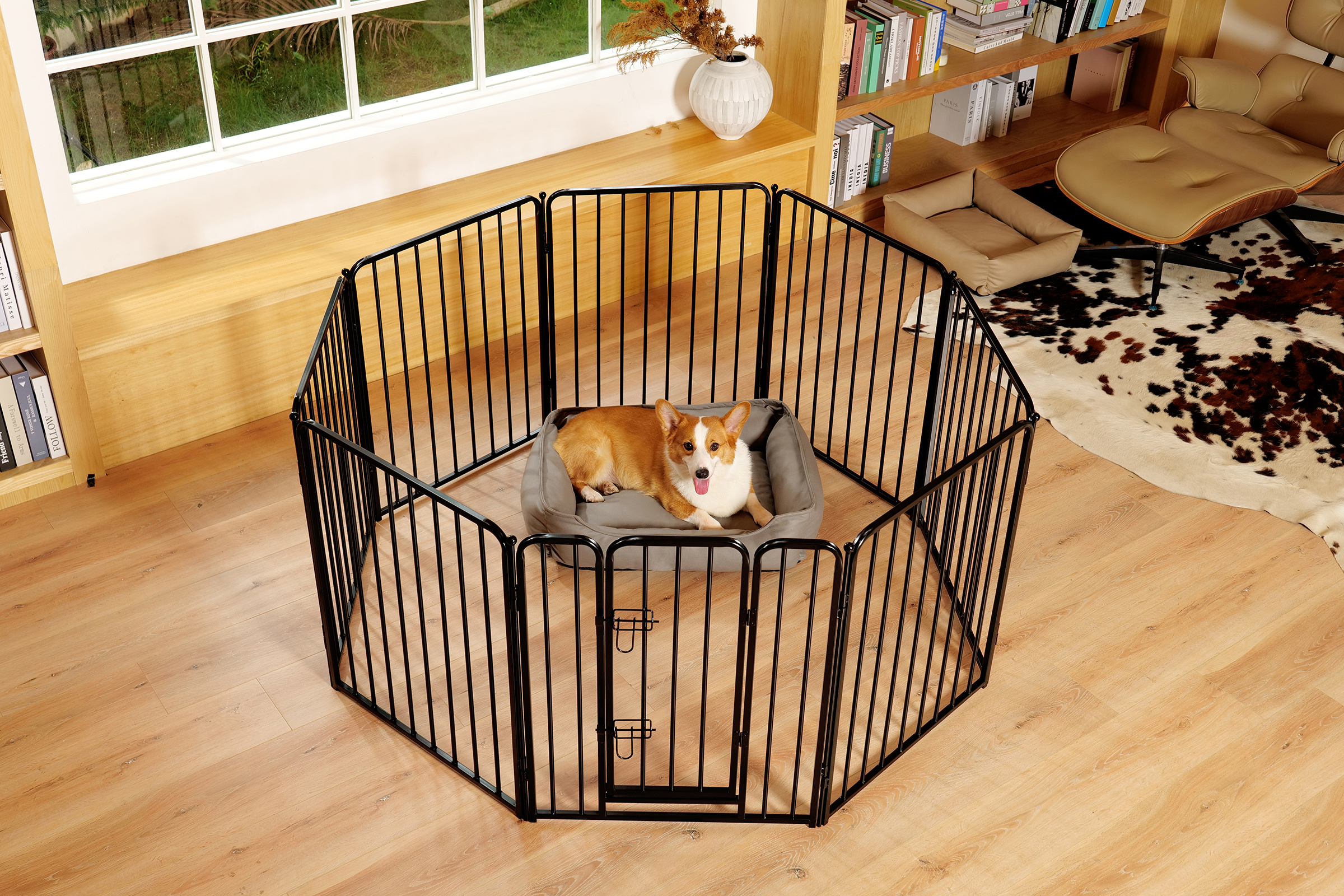Traveling with Your Dog? Here’s How to Choose the Right Cage for a Safe and Comfortable Journey
Traveling with Your Dog? Here’s How to Choose the Right Cage
Table of Contents
1. Understanding the Importance of a Dog Cage for Travel
2. Factors to Consider When Choosing a Dog Cage
2.1 Size Matters: Finding the Right Dimensions for Your Dog
2.2 Material Choices: What to Look For
2.3 Design Features: Ensuring Comfort and Safety
3. Types of Dog Cages for Travel
3.1 Soft-Sided Dog Cages: Pros and Cons
3.2 Hard-Sided Dog Cages: Durability and Security
3.3 Collapsible and Portable Dog Cages: Ideal for Road Trips
4. Complying with Airline Regulations for Pet Travel
5. Preparing Your Dog for Travel in a Cage
5.1 Acclimatization: Helping Your Dog Get Used to the Cage
5.2 Essential Packing Tips for Traveling with Your Dog
6. Frequently Asked Questions About Traveling with Dogs
7. Conclusion: Making the Right Choice for Your Dog’s Travel Cage
1. Understanding the Importance of a Dog Cage for Travel
Traveling with your dog can be a rewarding experience. However, the right dog cage is not just a luxury; it's a necessity. A well-chosen cage ensures your pet's safety, comfort, and security while you’re on the go. It minimizes anxiety for both you and your dog, making for a smoother journey. Whether it's a short car ride or a long flight, the right cage can significantly enhance your dog's travel experience.
2. Factors to Consider When Choosing a Dog Cage
Selecting the right cage involves multiple considerations to ensure it meets both your needs and those of your dog.
2.1 Size Matters: Finding the Right Dimensions for Your Dog
The first step in choosing a cage is determining the right size. Your dog should be able to stand up, turn around, and lie down comfortably. To measure your dog, follow these steps:
- **Height:** Measure from the top of your dog’s head to the ground while standing.
- **Length:** Measure from the tip of the nose to the base of the tail.
- **Width:** The cage should be at least twice the width of your dog when lying down.
An accurately sized cage ensures your dog feels secure and comfortable during the journey, reducing anxiety and movement.
2.2 Material Choices: What to Look For
Dog cages come in various materials, each with its own pros and cons. The most common materials include:
- **Plastic:** Lightweight and easy to clean, plastic cages are often used for airline travel. However, they may not provide the best ventilation.
- **Metal:** Metal cages are sturdy and provide excellent ventilation. They are ideal for larger dogs but can be heavier to transport.
- **Fabric:** Soft-sided cages are portable and comfortable but may not be suitable for chewers or large dogs.
Consider the journey duration and your dog’s behavior when selecting the material for the cage.
2.3 Design Features: Ensuring Comfort and Safety
The design of a dog cage can significantly impact your dog’s travel experience. Look for features such as:
- **Ventilation:** Ensure the cage has adequate airflow to keep your dog cool and comfortable.
- **Security Locks:** Choose a cage with secure latches to prevent escapes during travel.
- **Easy Clean:** Opt for cages with removable trays or easy-to-clean surfaces for quick maintenance.
These features contribute to a secure and comfortable travel environment for your pet.
3. Types of Dog Cages for Travel
Understanding the different types of cages can help you make an informed choice that fits your needs.
3.1 Soft-Sided Dog Cages: Pros and Cons
Soft-sided dog cages are lightweight and easy to transport. They often come with additional pockets for storage but may not be suitable for dogs that like to chew or dig. They are best for calm dogs or short trips.
3.2 Hard-Sided Dog Cages: Durability and Security
Hard-sided cages offer maximum security and durability. They are ideal for larger dogs and long-distance travel. Ensure that the cage is airline-approved and meets the necessary requirements.
3.3 Collapsible and Portable Dog Cages: Ideal for Road Trips
Collapsible cages are perfect for road trips due to their portability. They can be easily stored when not in use and are often designed for quick setup.
4. Complying with Airline Regulations for Pet Travel
If you plan to travel by air, it’s crucial to understand the regulations surrounding pet travel. Airlines have specific requirements for pet cages, including size, ventilation, and material. Always check with the airline before purchasing a cage to ensure compliance. Additionally, consider labeling the cage with your contact information in case of an emergency.
5. Preparing Your Dog for Travel in a Cage
Once you have selected the right cage, it’s time to prepare your dog for the journey.
5.1 Acclimatization: Helping Your Dog Get Used to the Cage
Introduce your dog to the cage well before the travel date. Allow your dog to explore the cage at home, rewarding them with treats and praise for entering. This will help reduce anxiety on travel day.
5.2 Essential Packing Tips for Traveling with Your Dog
When traveling with your dog, make sure to pack essential items such as:
- **Leash and Collar:** Always keep your dog secured.
- **Food and Water:** Bring enough for the journey, along with bowls.
- **Comfort Items:** Include a favorite toy or blanket to make your dog feel at home.
- **Health Records:** Keep a copy of your dog’s vaccination records and any medications.
Being well-prepared will contribute to a more enjoyable experience for both you and your dog.
6. Frequently Asked Questions About Traveling with Dogs
1. What size dog cage do I need for my pet?
Choose a cage that allows your dog to stand up, turn around, and lie down comfortably. Measure your dog to ensure a proper fit.
2. Can I use a soft-sided cage for air travel?
Many airlines allow soft-sided cages, but you must check their specific requirements before traveling.
3. How can I make my dog comfortable during travel?
Introduce your dog to the cage beforehand and pack familiar items to help ease anxiety.
4. Are there specific regulations for traveling with pets internationally?
Yes, different countries have their own regulations regarding pet travel. Always research and comply with these regulations before your trip.
5. What should I do if my dog is anxious in the cage?
Provide training and acclimatization to the cage, use calming aids if necessary, and consult your veterinarian for advice.
7. Conclusion: Making the Right Choice for Your Dog’s Travel Cage
Choosing the right cage for your dog when traveling is essential for a safe and comfortable journey. By considering size, material, and design, as well as understanding travel regulations, you can ensure your furry friend is well-prepared for the adventure ahead. With proper planning and preparation, traveling with your dog can be a stress-free experience that creates lasting memories for both of you. So, get ready to embark on your next adventure with your beloved pet!
Related Posts
Homey Pet Cage - A Cozy and Practical Home for Your Pets
In the realm of pet care products, the homey pet cage is making a significant mark, offering pet owners a unique and wonderful option for their furry friends.










